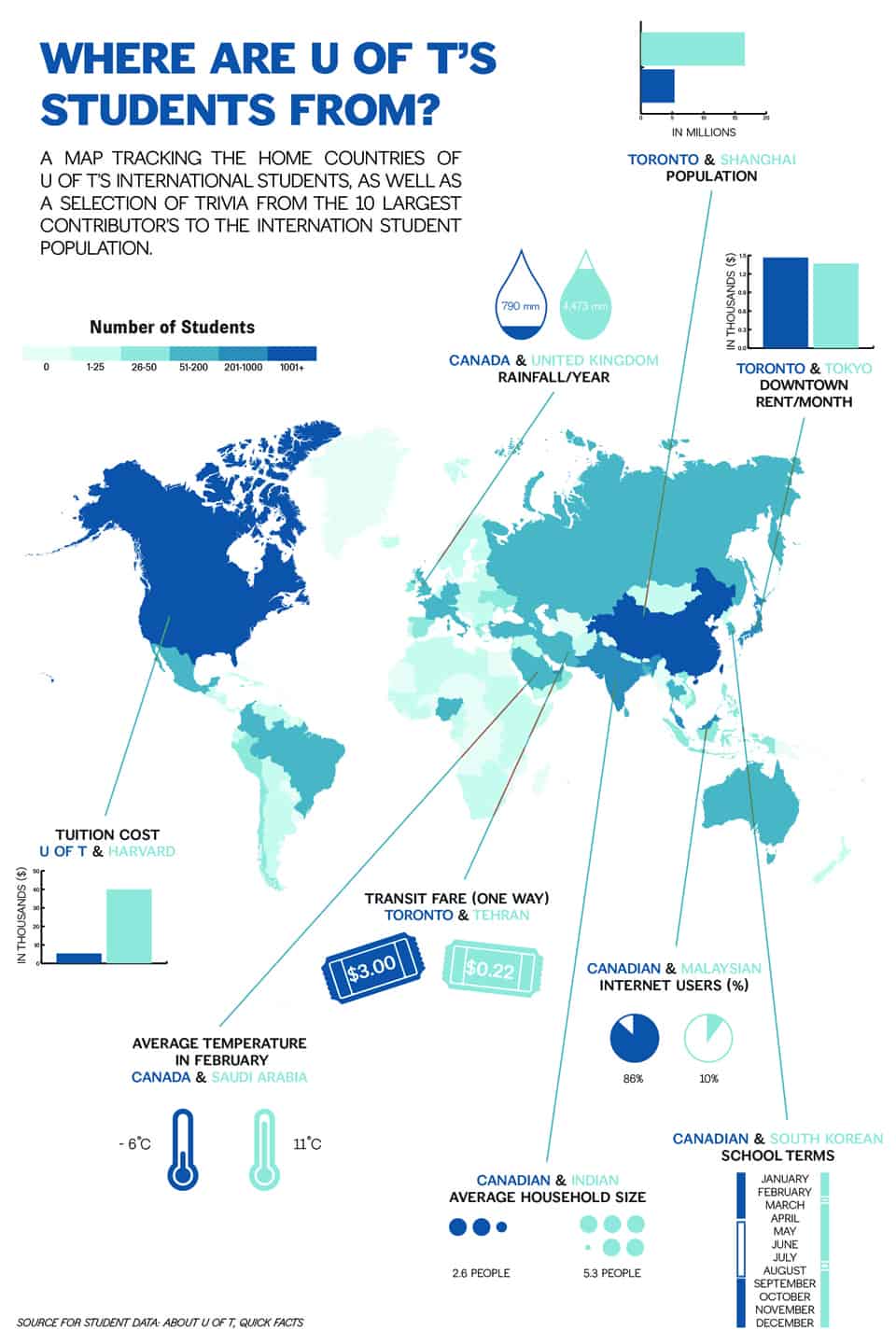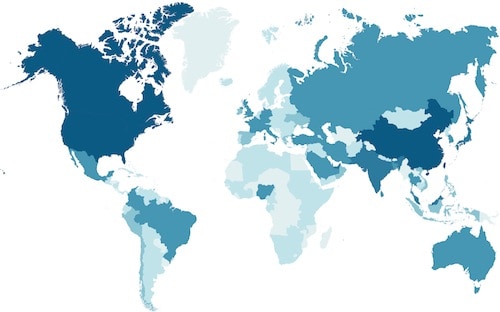Culture shock: international students adjust to life in Toronto

For Katerina Valle the biggest cultural shock of moving to Canada was not being able to speak her first language. “You miss speaking it,” explained Valle. “It’s not something you think about, especially when you can speak English, and you go to an English school, but you miss it. It’s a part of your personality, it’s like losing a part of yourself.”
Valle is from Peru and came to the University of Toronto in the fall of 2010. She said she chose U of T because Toronto appealed to her as a large international city. Though she’s happy with her decision now, she wasn’t in her first year. Valle, like many first year students, found that U of T could be cold and overwhelming. She missed the fresh local food that was the centre of social life in Peru.
She eventually found a community with the people in her residence — there were a few Latinas in her building who would eat late dinners with her and speak in Spanish. Now, Valle is involved in the Latin American Students Association, and credits it as giving her a real sense of community in university. “At U of T, if you want to have friends, I think clubs are the way to do it,” explained Valle.
U of T has 29 students from Peru, and even more from Latin America as a whole. However, not all international students at U of T have a support system for the students to fall back on. Shilpa Nagarajan came to U of T from Singapore.
While she lived in Montreal for seven years when she was growing up, she still struggles with adjusting to life in Canada; from little things like stores closing early, to people being able to express their thoughts and opinions with freedom.
Nagarajan was lucky enough to live in a residence building with a number of Singaporeans including the executive members of the Malaysian and Singaporean Student Association. But she says that she doesn’t actively try to find people from her native country. “It helps that there is such a vast diversity of students from different cultures going to this university,” explains Nagarajan. “It feels like home when I meet other international students.”
U of T currently has 10,276 international undergraduates.
This makes up 15.3 per cent of the total undergraduate population. Toronto itself is a city where half of it’s citizens were raised outside Canada.
Chinese students make up 48.9 per cent of international students at U of T, with 4,476 students.
There are twelve distinct campus groups that cater to Chinese students with activities ranging from debate, to music, and volunteering.
There are 22 countries that have only one student attending U of T: Benin, Cameroon, Gabon, Madagascar, Malawi, Mauritania, Mozambique, Rwanda, Sudan, Afghanistan, Isle of Man, Jersey, Luxembourg, Macedonia, Russia, Serbia and Montenegro, Spain, Antigua/Barbuda, Guatemala, Bolivia, French Guiana, Paraguay, Iraq, Estonia, and Moldova
Iraq, Estonia, Moldova, Paraguay, French Guiana, and Bolivia have no student association at U of T.
(There are groups that cover several countries such as the European Students Association, African Students association).


